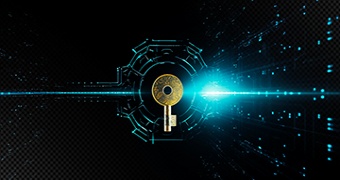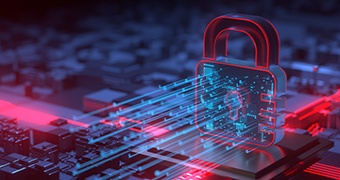We are living in a world where artificial intelligence (AI) is transforming eve....
Applying ISO/IEC 27001 in The Telecommunications Industry

In recent years, the telecommunications industry has undergone substantial growth, continuously striving to explore new market opportunities. Driven by technological advancements such as 5G, the Internet of Things (IoT), cloud computing, and digital transformation, telecom providers are navigating a complex and dynamic environment.
The global telecommunications market is poised for significant expansion in 2024, with projected expenditures reaching U.S. $1.6 trillion (Statista). This rapid evolution has brought unprecedented opportunities for growth and innovation but has also magnified the risks associated with cybersecurity.
Telecom companies are at the heart of the digital infrastructure, handling vast amounts of sensitive data, including personal information, financial transactions, and critical communications. The breach of these data can have catastrophic consequences for both businesses and individuals. As a result, the need for robust information security measures has never been more critical.
Key Challenges in Telecom Information Security
The telecommunications sector faces different information security challenges, such as:
- Cyber Threats and Attacks: Telecom networks are prime targets for various cyber-attacks, including Distributed Denial of Service (DDoS) attacks, malware, phishing, and ransomware. Attackers aim to disrupt services, steal sensitive information, or compromise network integrity.
- Data Privacy and Protection: With the vast amount of personal and sensitive data transmitted over telecom networks, ensuring data privacy and protection is paramount. Compliance with regulations like GDPR and CCPA adds complexity to managing data security.
- Evolving Technology: Rapid advancements in technology introduce new security vulnerabilities. Keeping up with these changes and securing new technologies is a significant challenge.
- Insider Threats: Employees, contractors, or third-party vendors with access to telecom networks can pose significant security risks. Insider threats can result from negligence, malicious intent, or compromised accounts.
- Network Complexity: Telecom networks are inherently complex, comprising multiple interconnected systems and devices. Ensuring security across such a diverse and intricate environment requires robust and comprehensive security measures.
- Supply Chain Security: The telecom industry relies on a vast supply chain, including hardware and software from various vendors. Ensuring the security of these components and mitigating risks from potentially compromised suppliers is critical.
- Legacy Systems: Upgrading or securing outdated legacy systems poses a significant challenge, especially without disrupting existing services.
- Regulatory Compliance: Adhering to various international, national, and industry-specific regulations can be complex and resource-intensive. Ensuring compliance while maintaining robust security measures is a continuous challenge.
- User Awareness and Training: Ensuring that employees and users are aware of security best practices and potential threats is crucial. Continuous training and awareness programs are necessary to mitigate human-related security risks.
- Incident Response and Management: Quickly detecting, responding to, and mitigating security incidents is essential to minimize damage. Developing effective incident response plans and maintaining readiness for potential breaches is a constant challenge.
The Role of ISO/IEC 27001 in the Telecom Industry
To mitigate these risks, telecom companies must adopt a comprehensive and systematic approach to information security management. The ISO/IEC 27001 standard provides a robust framework for establishing, implementing, maintaining, and continually improving an Information Security Management System (ISMS).
By implementing ISO/IEC 27001, telecom organizations can:
- Protect sensitive information from unauthorized access, disclosure, or modification.
- Ensure the integrity and availability of critical systems and services.
- Comply with regulatory requirements and industry standards, such as GDPR, CCPA, and industry-specific regulations.
- Improve business continuity and disaster recovery.
- Show commitment to information security to build customer trust and confidence.
Tailoring ISO/IEC 27001 for the Telecom Industry
While ISO/IEC 27001 provides a generic framework, telecom organizations need to tailor its implementation to address their specific challenges. ISO/IEC 27011 offers additional guidance for the telecommunications sector.
Key considerations for telecom companies include:
- Protecting network infrastructure and core systems: Implementing security controls to protect physical infrastructure, network devices, and critical systems from unauthorized access and cyberattacks.
- Safeguarding customer data and privacy: Implementing data protection measures to ensure confidentiality, integrity, and availability of customer data, complying with privacy regulations.
- Managing complex supply chains: Assessing and managing security risks within the supply chain, including vendors, suppliers, and third-party service providers.
- Ensuring business continuity in the face of disruptions: Mitigating the consequences of disruptions involves creating and practicing business continuity and disaster recovery protocols.
- Addressing the unique risks associated with emerging technologies: Evaluating and managing security risks associated with new technologies such as 5G, IoT, and cloud computing.
Implementing ISO/IEC 27001 in Telecom
Implementing ISO/IEC 27001 involves several key steps:
- Information Security Policy: Establish a concise policy outlining the organization's dedication to data protection.
- Risk Assessment: Identify potential threats and vulnerabilities by conducting a thorough risk assessment.
- ISMS Development: Develop an ISMS based on the identified risks and ISO/IEC 27001 requirements.
- Implementation and Operation: Implement the ISMS through policies, procedures, and processes.
- Monitoring, Measurement, Analysis, and Improvement: Continuously monitor and evaluate the effectiveness of the ISMS, making necessary improvements.
Overcoming Challenges
Implementing ISO/IEC 27001 can be challenging for telecom companies due to the complexity of their operations and the rapidly evolving threat landscape. Some common challenges include:
- Lack of resources: Insufficient budget and personnel to support the implementation process.
- Cultural change: Overcoming resistance to change and fostering a security-conscious culture.
- Integration with existing systems: Integrating the ISMS with existing IT systems and processes.
- Keeping up with the evolving threat landscape: Staying updated on the latest threats and vulnerabilities.
How Can PECB Help?
PECB supports the telecom industry by offering training courses, certification programs, and resources to help professionals and organizations strengthen their information security. By focusing on globally recognized standards like ISO/IEC 27001, PECB ensures that individuals are well-equipped to tackle the key challenges in telecom information security.
Conclusion
The telecommunications industry is undergoing rapid transformation, presenting both significant opportunities and substantial security challenges. As telecom companies handle vast amounts of sensitive data and navigate complex networks, robust information security measures are essential. ISO/IEC 27001 provides a comprehensive framework to safeguard information, ensure compliance, and enhance business resilience.
About the Author
Vlerë Hyseni is the Senior Digital Content Specialist at PECB. She is in charge of doing research, creating, and developing digital content for a variety of industries. If you have any questions, please do not hesitate to contact: support@pecb.com.


